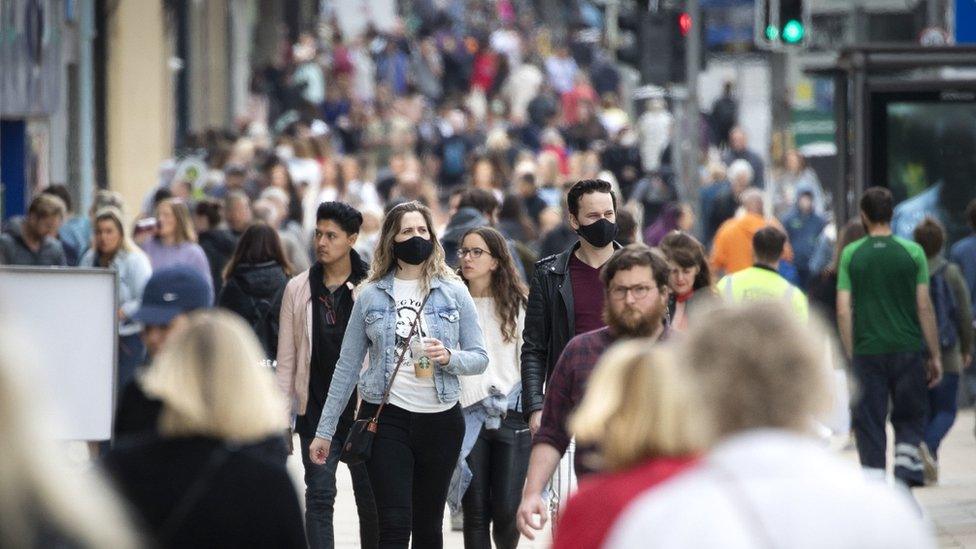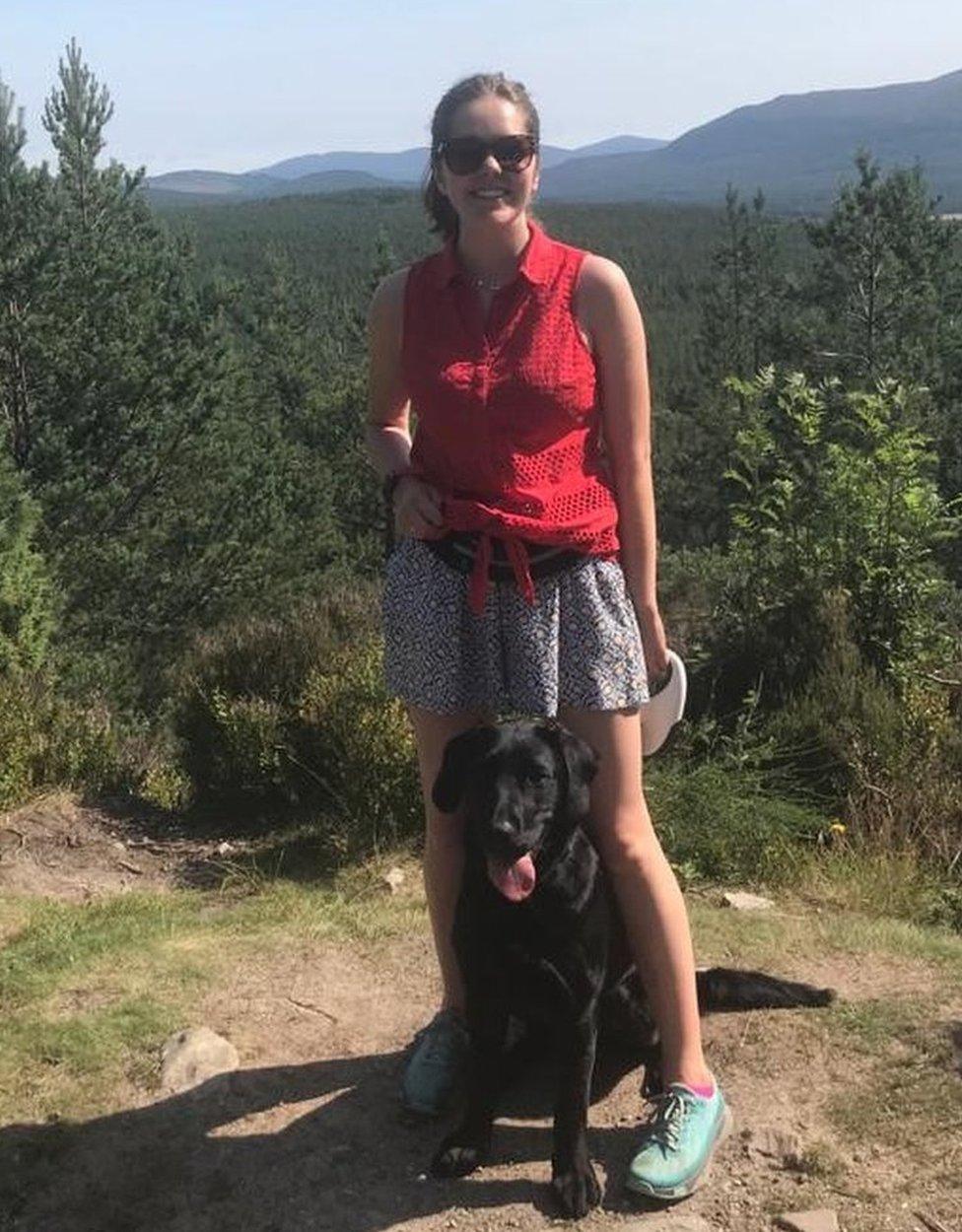More people in Scotland swap cities for rural life
- Published

Many Scots left busy cities for quieter towns
More people in Scotland moved from cities to rural areas during the pandemic.
Populations fell in Scotland's largest cities, while some rural areas saw an increase for the first time in years.
New figures from National Records of Scotland (NRS) found the health crisis may have reversed long-term trends.
The NRS cited students moving home temporarily, people opting to leave cities long-term or updating their GP addresses for vaccine letters.
The Mid-Year Population Estimates for the year up to 30 June 2021 is the first to cover a full pandemic year.
The most common moves within Scotland were from the largest cities; Glasgow, Edinburgh and Aberdeen, to neighbouring council areas.
The greatest population growth was in council areas around Edinburgh.
In rural areas such as Aberdeenshire and Argyll and Bute, there was an increase in people moving into the area - reversing the trend of several years of falling populations.

'I love being in the countryside'

Amy with family dog Archie.

Amy Fraser, 23, works as a communications officer and constituency assistant at the Scottish Parliament.
Her job is based in Glasgow, however she has mostly worked from her family home in Ellon, Aberdeenshire, since the start of the pandemic.
She said: "I've worked from home for about two and a half years now.
"I love being in the countryside, the costs are a lot cheaper, and I have access to my family dog and the beach.
"In my heart I want to return to Glasgow, but the cost of renting or buying is way too high.
"Things are a lot more affordable here in Aberdeenshire. Even when I'm looking at returning, it's still the suburbs of Glasgow.
"My job was also temporary at the beginning and I worked one or two days a week.
"That was ideal for working from home as it would've been difficult to move to Glasgow and work only one day a week."
Amy occasionally needs to work in the Glasgow office, but advance notice is always given so she can arrange travel and accommodation.
She said: "I'm lucky that my work have been so flexible.
"I think office work can be a hybrid of home and office working."

Esther Roughsedge, head of population and migration statistics at NRS, said future reports will reveal whether rural areas will sustain the current growth levels.
The report, external estimates that Scotland's population was 5,479,900 at mid-2021.
The country's population grew by 13,900 people, or 0.25% - reflecting a slower growth than in the five years before the pandemic.
The average annual growth in the five years before Covid was higher, at around 23,100 people or 0.43%.
There have also been more deaths than births for the last seven years, with deaths outnumbering births by the largest amount on record.
This means that migration was the main driver of population growth in Scotland over the latest year. For the last two decades, more people have moved to Scotland than left.
Ms Roughsedge added: "We currently continue to see Scotland's population rise, albeit more slowly than before the pandemic.
"However, our most recent projections looking ahead to 2045, published in January, show that if current trends in births, deaths and migration continue, Scotland's population will start to fall by the end of this decade."
